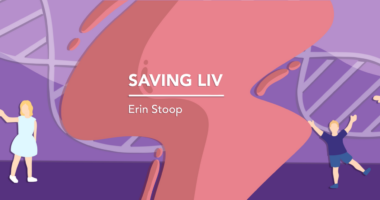#AANAM – Gene Therapy Shows Promise in Early Type A Disease

Treatment with ABO-102, an investigational gene therapy being developed by Abeona Therapeutics, normalized development in children with Sanfilippo syndrome type A, according to new data from a clinical trial.
The data indicate that the gene therapy is especially effective when given early in life, before the disease has started to progress.
The findings were presented at the 2021 annual meeting of the American Academy of Neurology in a talk, titled “Results of Transpher A, a Multicenter, Single‐Dose, Phase 1/2 Clinical Trial of ABO‐102 Gene Therapy for Sanfilippo Syndrome Type A (Mucopolysaccharidosis IIIA).”
Sanfilippo syndrome type A, the most common and most severe of the four types of Sanfilippo syndrome, is caused by mutations in the gene SGSH. The aim of gene therapy is to deliver a non-mutated version of this gene to cells in the body. ABO-102 uses an engineered viral vector to deliver a non-mutated version of the SGSH gene.
The therapy is currently being investigated in a Phase 1/2 clinical trial (NCT02716246) sponsored by Abeona. The ongoing trial is actively recruiting patients in Ohio, Pennsylvania, South Australia, and Spain.
Participants in the trial are divided into three groups, each of which is given a different dose of the therapy (5×1012, 1×1013, and 3×1013 vector genomes/kg. Researchers are currently recruiting for the highest-dose group only.
At the annual meeting, Kevin Flanigan, MD, the trial’s principle investigator, presented data for 20 children who have been dosed in the trial. Flanigan presented prior data from 19 of these participants earlier this year at the WORLDSymposium 2021.
Currently, the mean follow-up times are 58 months (nearly five years) in the lowest dose group, 49 months (over four years) in the middle dose group, and 24 months (two years) in the highest dose group.
Flanigan shared developmental quotient (DQ) changes over time for the 20 participants. DQ is a numeric measurement of how much a child is developing, analogous to how an intelligence quotient assesses intelligence. Assessing age-equivalent developmental scores is the trial’s main goal; secondary endpoints include changes in biological markers and on standardized assessments of behavior, quality of life, and parenting stress.
Flanigan highlighted data from the 14 trial participants who have received the highest dose of ABO-102. Among these individuals, DQ trends differed notably based on when treatment was started.
Originally, the trial had started dosing patients who were relatively older (about three years of age and up).
“Patients at older ages show a decline [in DQ] similar to that of natural history, although individual patients show some stabilization of cognitive function,” Flanigan said.
“Natural history” refers to how the disease normally progresses without any treatment. For Sanfilippo type A, the natural history is for DQ to increase in infancy, then plateau around age 2 or 3, and then decrease with age as the disease progresses.
“Critically, patients who were treated younger [before age 2] actually showed continued increase in development,” Flannigan said.
Children in the highest dose group treated before age 2, or those who had a DQ higher than 60, continued to show developmental progress 30–36 months after treatment, a time at which “they should be experiencing cognitive decline according to natural history data,” Flannigan noted.
Generally, these patients who were treated younger had DQs in the 60th percentile or higher after age 3, which is extremely uncommon among untreated children with Sanfilippo syndrome type A, he said.
“One [participant] actually follows the normal developmental quotient [over time],” Flannigan said, adding that these DQ trends are “really quite distinct from what we typically see in patients.”
Laboratory measures of disease markers have also normalized with treatment, according to Flannigan. In particular, levels of heparan sulfate (a sugar molecule that abnormally accumulates in Sanfilippo syndrome) were significantly reduced in participants’ plasma and cerebrospinal fluid, which is the fluid that surrounds the brain and spinal cord. There was also an observed decrease in liver volume.
The gene therapy has so far been well-tolerated, with no deaths or serious or clinically significant adverse events related to the treatment.






